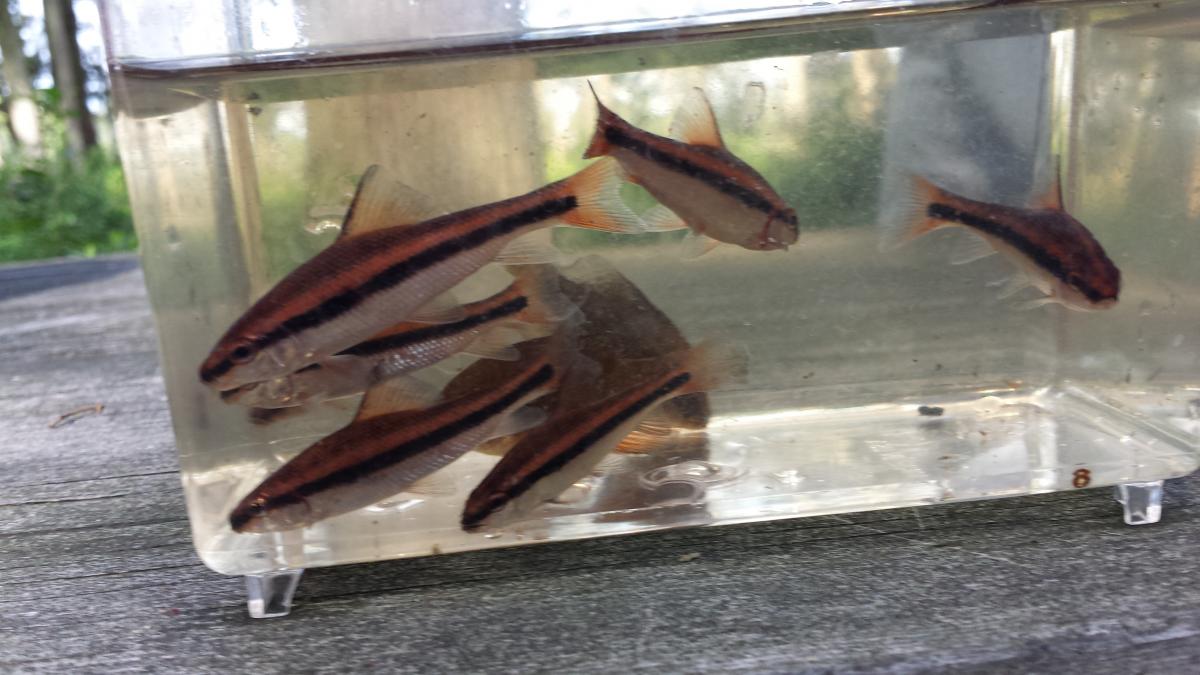1st Location: Bunker Hill Bogs, Jackson, NJ
Sampling methods: dip nets, 4x10 seine
Abundant Species: Bluegill sunfish (many juveniles), Eels (many juveniles),
Blackbanded sunfish, Swamp darters
Other Fish: Tadpole Madtom, Pirate Perch, Mud sunfish, Banded sunfish
Other: parasitic wasp, leech, tadpoles, garter snake, frog
2nd Location: Horicon Lake, Lakehurst, NJ
Abundant Species: Bluespotted, Banded and Blackbanded sunfish, Mud sunfish, Pirate perch (many juviniles),
Other fish: Bullhead catfish, Creek chubsuckers, Bluegill sunfish, Chain pickerel
Other: Musk turtle (several juviniles)
3rd Location: Cattus Island Park, Ocean County, NJ
Fish Species: Mummichog, Naked Goby, Banded Killifish, Silversides, Sheepshead minnow
Other: Jellyfish, Crab (blue?), Ghost shrimp
(all were abundant)
Photos: Bunker Hill Bogs
1. NANFA members Mike (keepnatives) and Josh (FirstChaos) showing one of our NJAS newcomers some dipnet techniques. The water here is very tannic, tea colored soft and acidic.
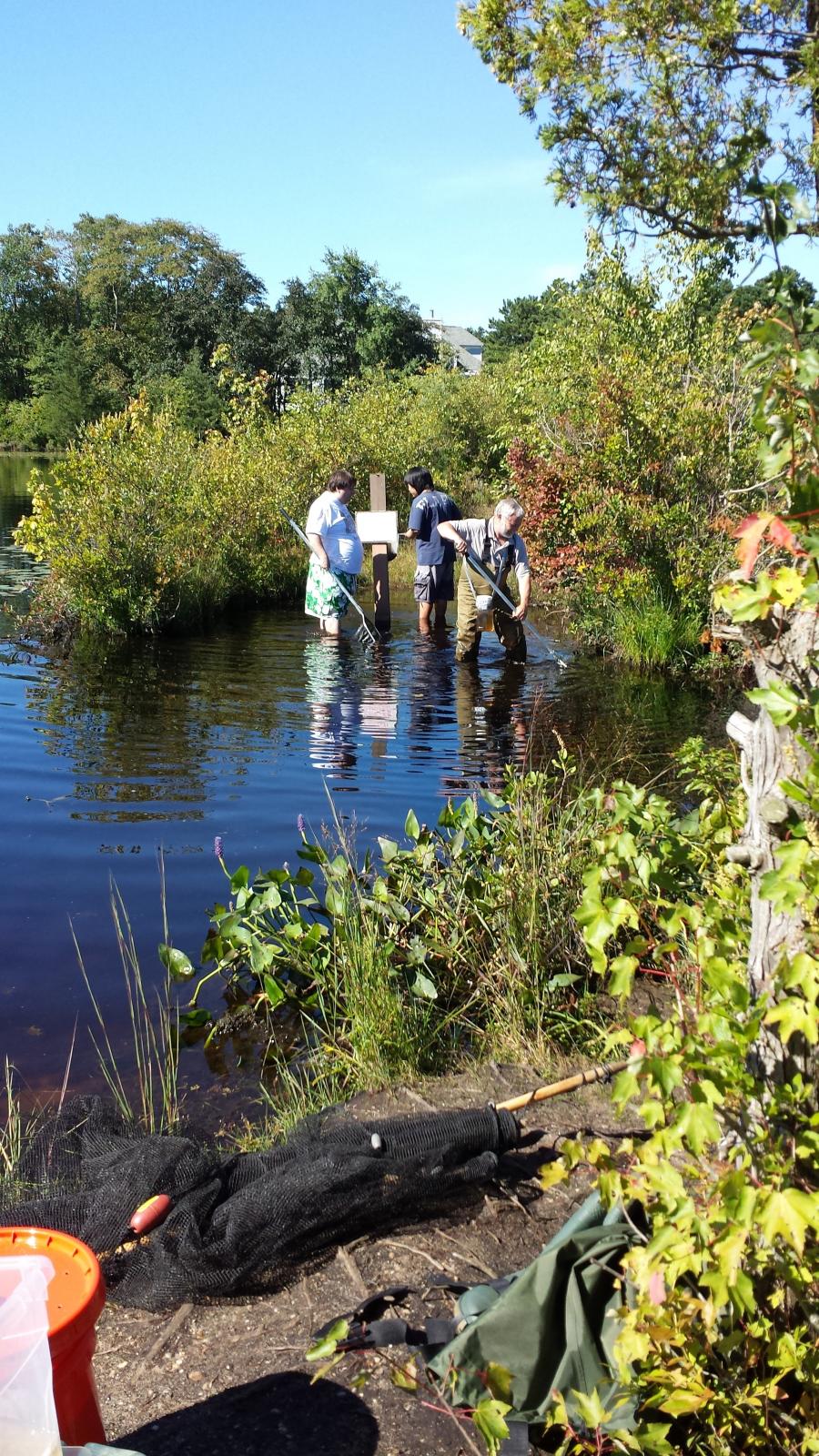
2. on the way in from the parking area, we encountered a parasitic wasp carrying a caterpiller..
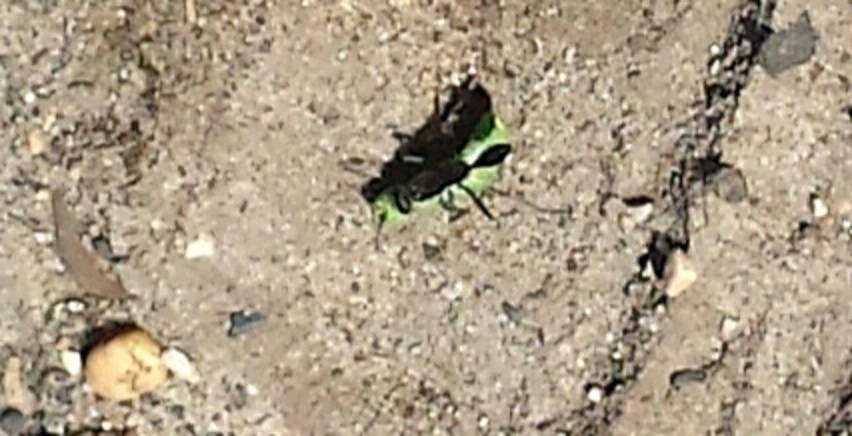
3. Mud sunfish (editted)
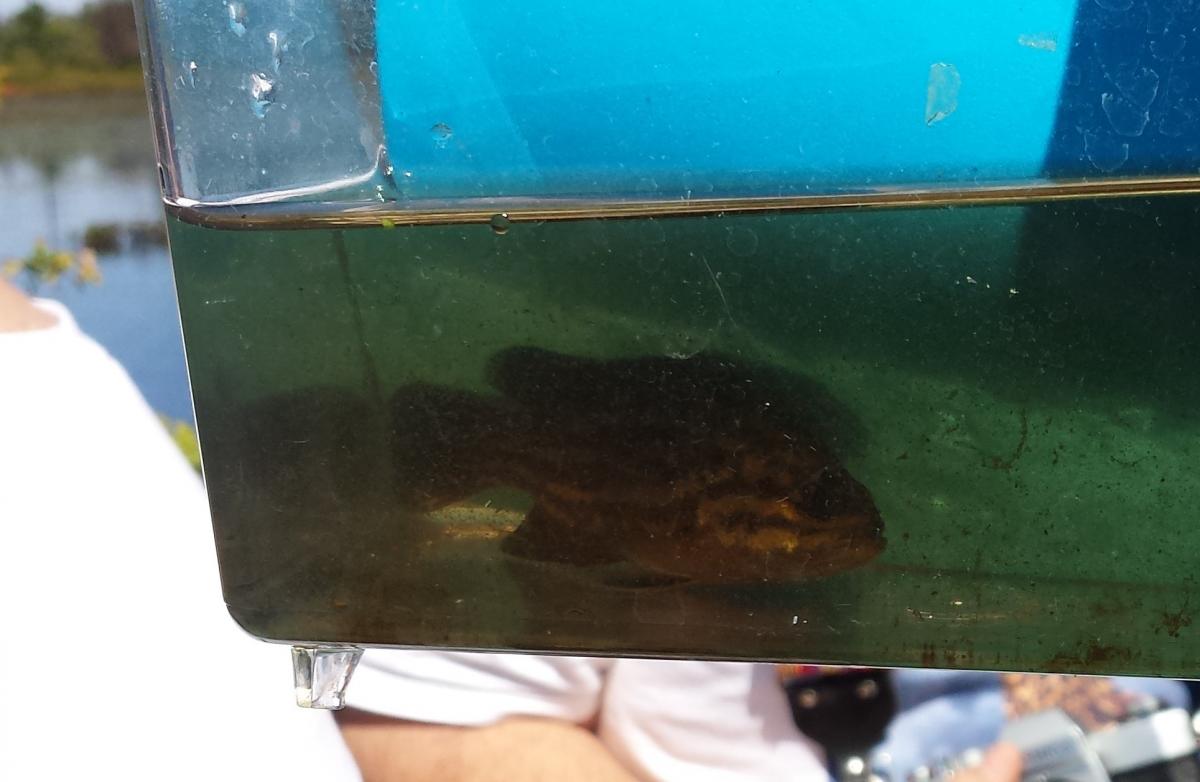
Photos: Horicon Lake
1. This is a small lake in a built-up residential area. Over the winter, the water level was lowered and much of the aquatic vegetation was removed. When we sampled in the spring, we found almost no floating plants and very few fish other that lots of juvenile pickerel. Now, there's still much less plant material than usual, but the fish seem to be recovering ok. Again, the water here is very tannic.

2. Junenile pickerel (chain pickerel)
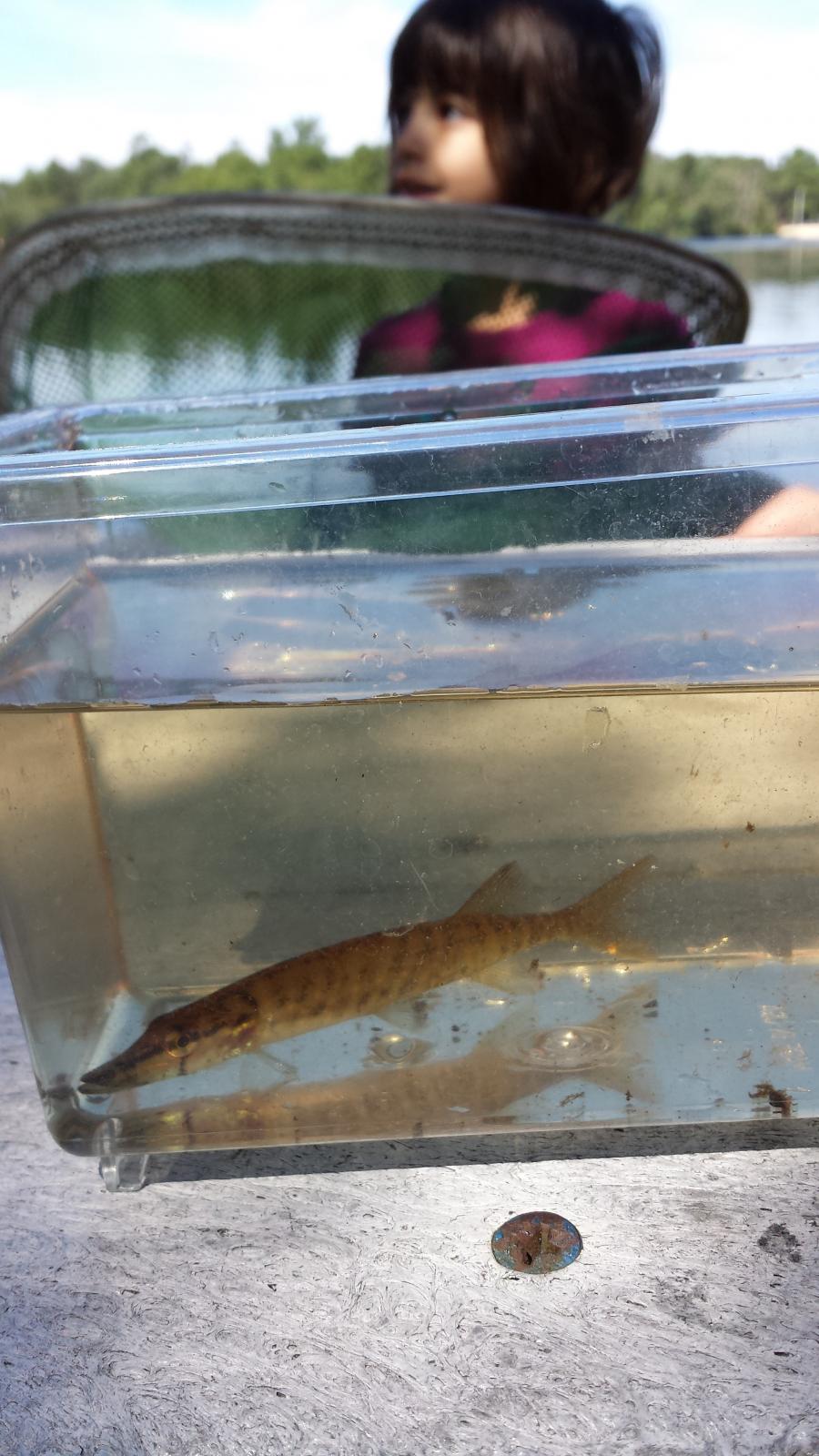
3. Blackbanded sunfish

4. Creek chubsucker
